Abstract
Cytophilic antibody was produced in guinea-pigs by single injections of sheep erythrocytes in Freund's complete adjuvant. The nature of the receptor for this antibody was studied by treating macrophages with various reagents and determining changes in their ability to take up cytophilic antibody, as shown by the subsequent adherence of sheep red cells.
Receptor activity was destroyed by phospholipase A, iodine and periodate: it was reduced by lanthanum and uranyl ions, but not by calcium ions, although all these ions are able to interact with lipids. It was also reduced by poly-L-lysine.
The receptor was not affected by pH in the range 5.4–9.0 or by the presence of EDTA, heparin, chloroquine or hydrocortisone. Neuraminidase and lipase had little effect but preteolytic enzymes appeared to increase the uptake of cytophilic antibody.
It was concluded that a phospholipid or phospholipoprotein is an important part of the macrophage receptor for cytophilic antibody.
Full text
PDF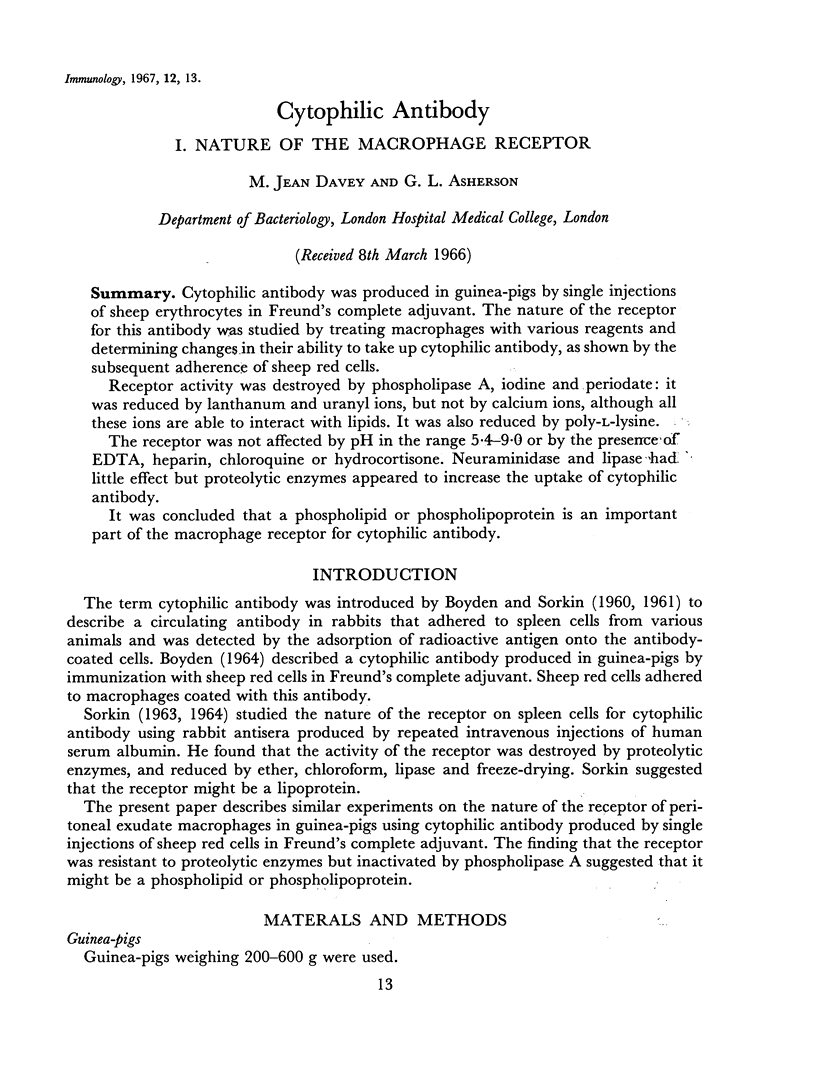
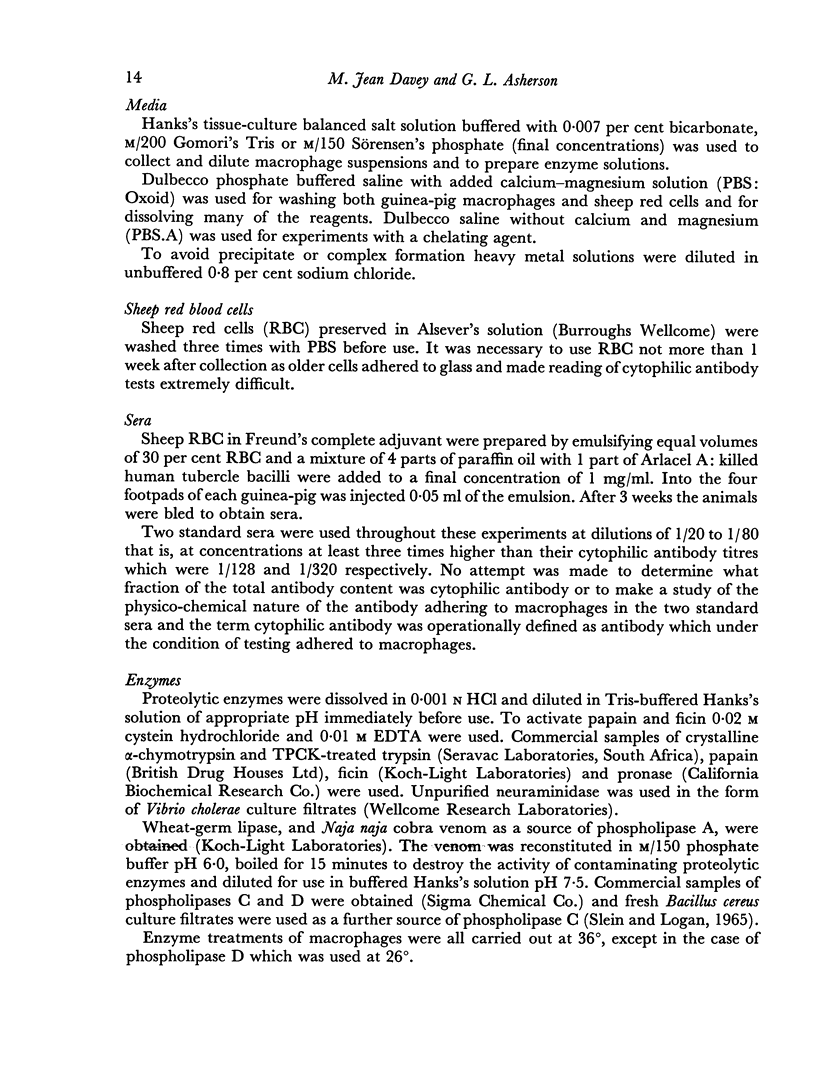
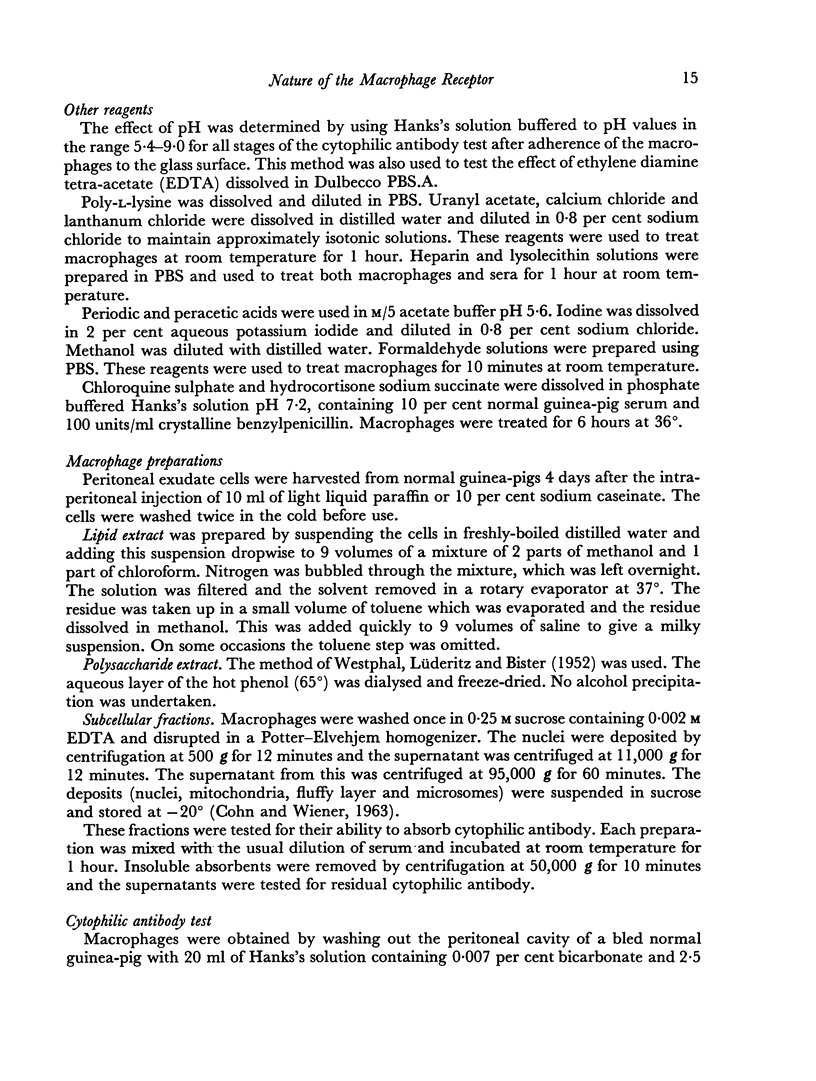
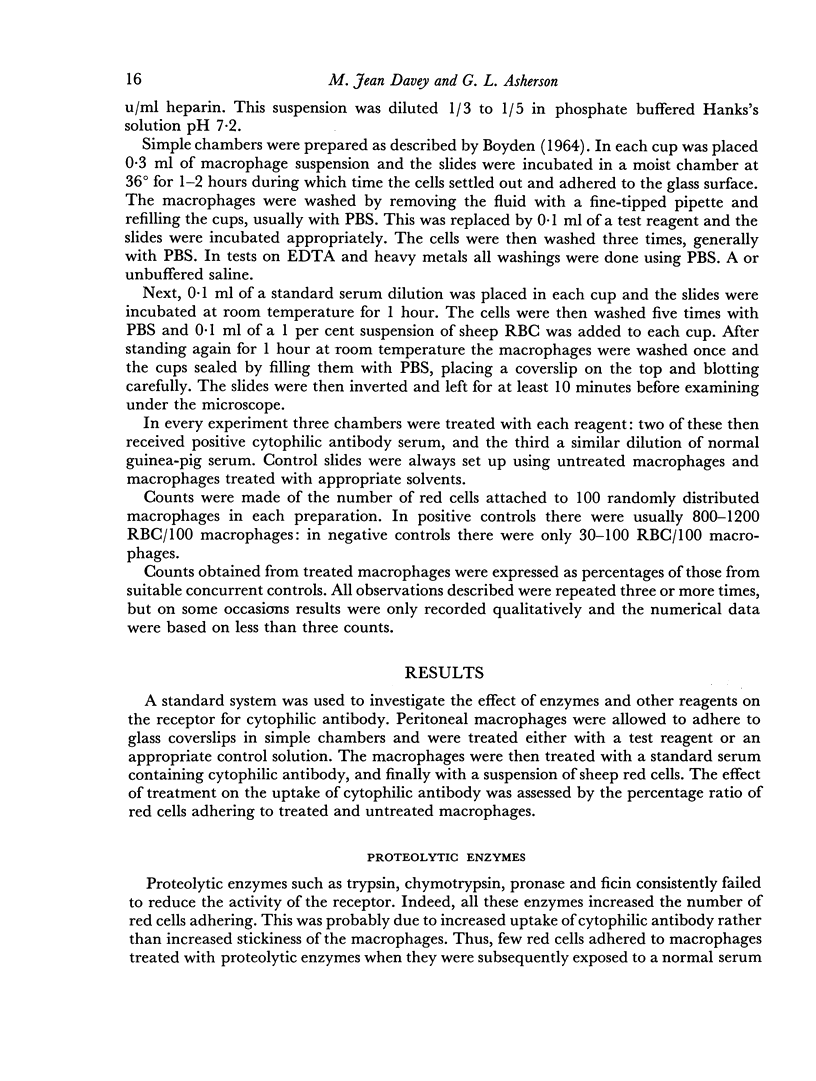
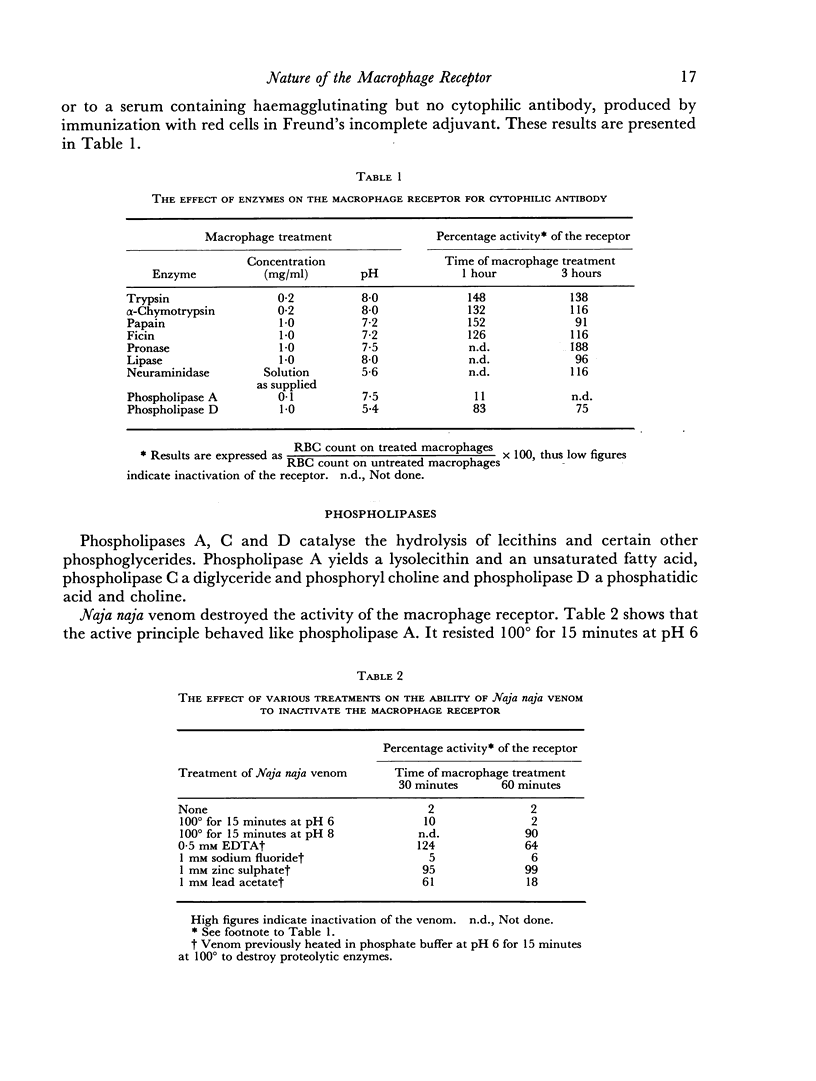
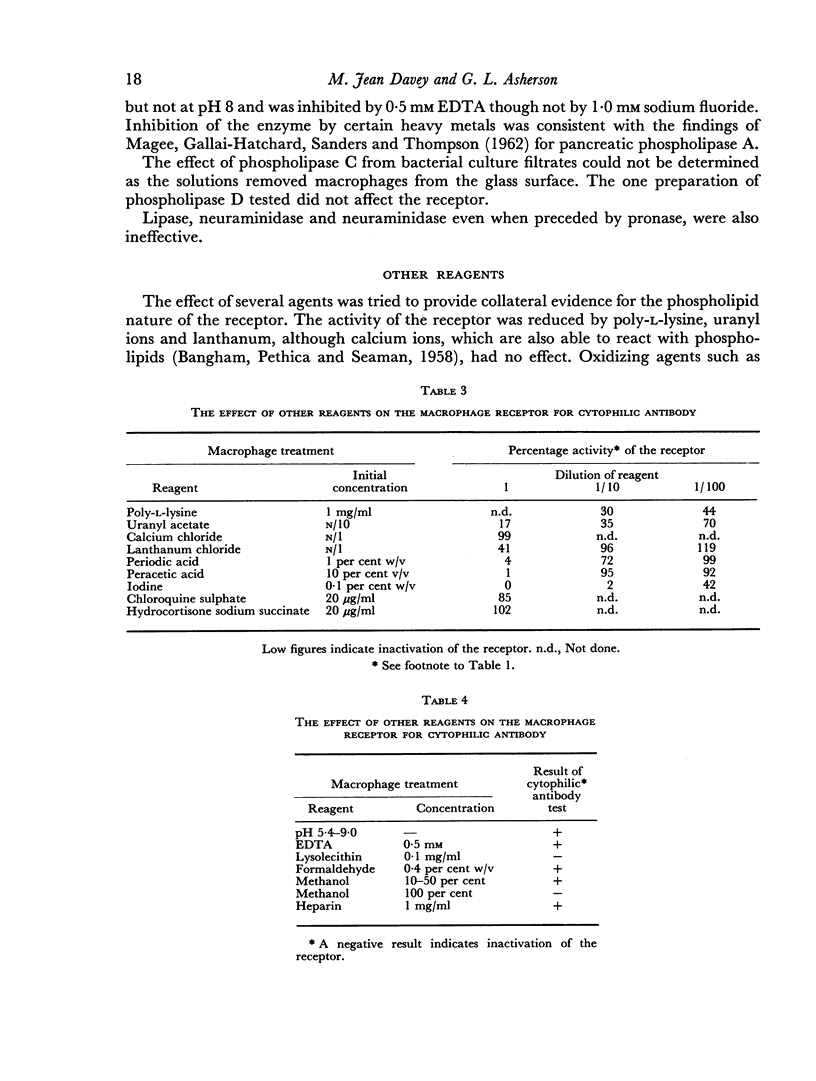
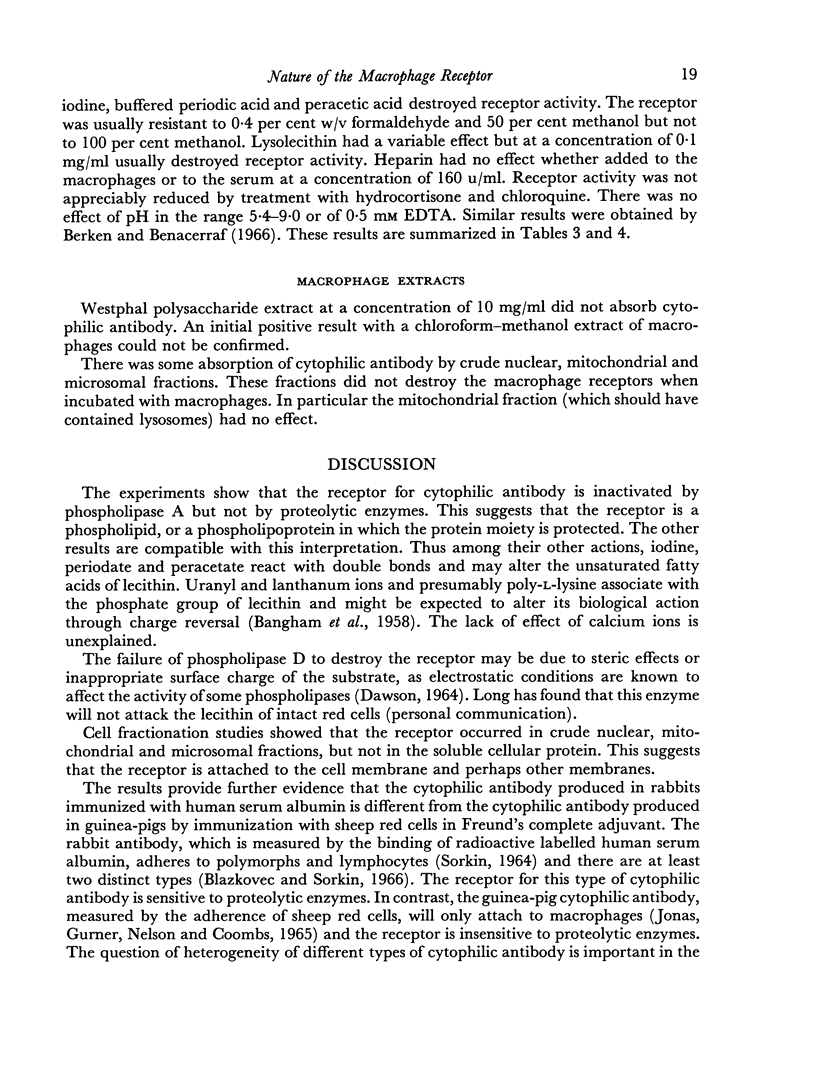
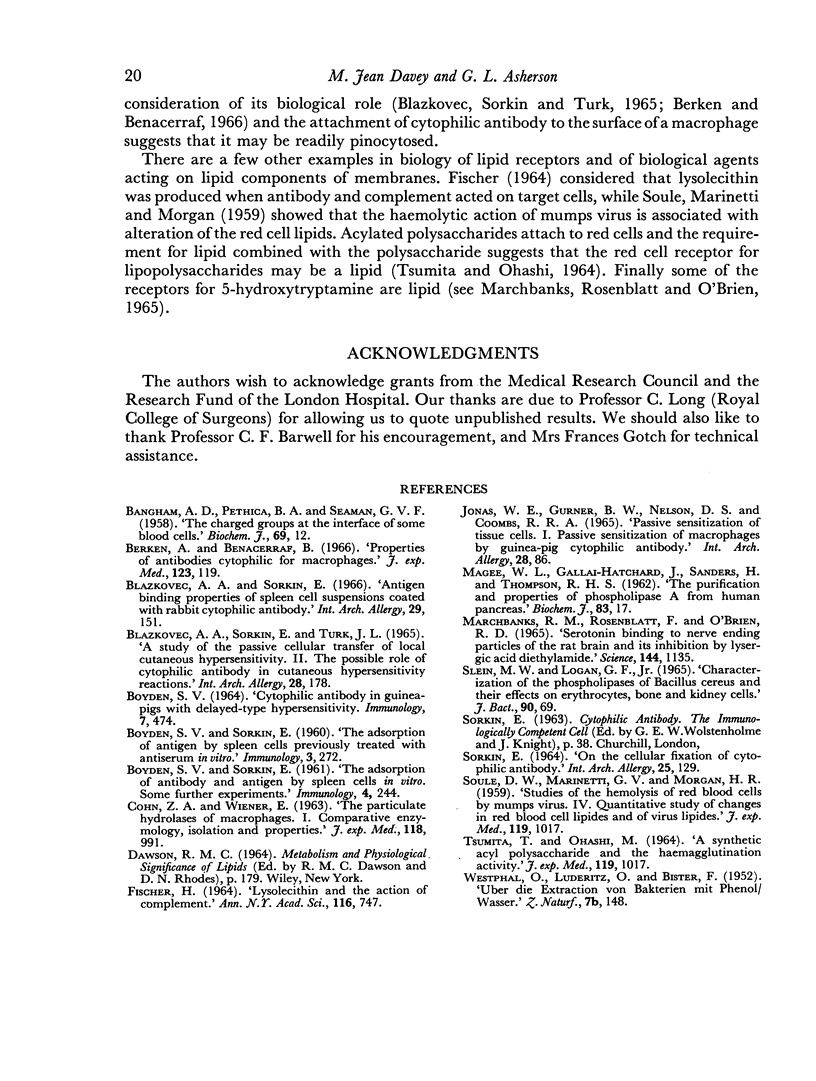
Selected References
These references are in PubMed. This may not be the complete list of references from this article.
- BANGHAM A. D., PETHICA B. A., SEAMAN G. V. The charged groups at the interface of some blood cells. Biochem J. 1958 May;69(1):12–19. doi: 10.1042/bj0690012. [DOI] [PMC free article] [PubMed] [Google Scholar]
- BOYDEN S. V. CYTOPHILIC ANTIBODY IN GUINEA-PIGS WITH DELAYED-TYPE HYPERSENSITIVITY. Immunology. 1964 Jul;7:474–483. [PMC free article] [PubMed] [Google Scholar]
- BOYDEN S. V., SORKIN E. The adsorption of antigen by spleen cells previously treated with antiserum in vitro. Immunology. 1960 Jul;3:272–283. [PMC free article] [PubMed] [Google Scholar]
- Berken A., Benacerraf B. Properties of antibodies cytophilic for macrophages. J Exp Med. 1966 Jan 1;123(1):119–144. doi: 10.1084/jem.123.1.119. [DOI] [PMC free article] [PubMed] [Google Scholar]
- Blazkovec A. A., Sorkin E. Antigen binding properties of spleen cell suspensions coated with rabbit cytophilic antibody. Int Arch Allergy Appl Immunol. 1966;29(2):151–166. doi: 10.1159/000229696. [DOI] [PubMed] [Google Scholar]
- Blazkovec A. A., Sorkin E., Turk J. L. A study of the passive cellular transfer of local cutaneous hypersensitivity. II. The possible role of cytophilic antibody in cutaneous hypersensitivity reactions. Int Arch Allergy Appl Immunol. 1965;28(4):178–192. doi: 10.1159/000229661. [DOI] [PubMed] [Google Scholar]
- COHN Z. A., WIENER E. THE PARTICULATE HYDROLASES OF MACROPHAGES. I. COMPARATIVE ENZYMOLOGY, ISOLATION, AND PROPERTIES. J Exp Med. 1963 Dec 1;118:991–1008. doi: 10.1084/jem.118.6.991. [DOI] [PMC free article] [PubMed] [Google Scholar]
- MAGEE W. L., GALLAI-HATCHARD J., SANDERS H., THOMPSON R. H. The purification and properties of phospholipase A from human pancreas. Biochem J. 1962 Apr;83:17–25. doi: 10.1042/bj0830017. [DOI] [PMC free article] [PubMed] [Google Scholar]
- MARCHBANKS R. M., ROSENBLATT F., O'BRIEN R. D. SEROTONIN BINDING TO NERVE-ENDING PARTICLES OF THE RAT BRAIN AND ITS INHIBITION BY LYSERGIC ACID DIETHYLAMIDE. Science. 1964 May 29;144(3622):1135–1136. doi: 10.1126/science.144.3622.1135. [DOI] [PubMed] [Google Scholar]
- SORKIN E. ON THE CELLULAR FIXATION OF CYTOPHILIC ANTIBODY. Int Arch Allergy Appl Immunol. 1964;25:129–144. doi: 10.1159/000229516. [DOI] [PubMed] [Google Scholar]
- Slein M. W., Logan G. F. Characterization of the Phospholipases of Bacillus cereus and Their Effects on Erythrocytes, Bone, and Kidney Cells. J Bacteriol. 1965 Jul;90(1):69–81. doi: 10.1128/jb.90.1.69-81.1965. [DOI] [PMC free article] [PubMed] [Google Scholar]
- TSUMITA T., OHASHI M. A SYNTHETIC ACYL POLYSACCHARIDE AND THE HEMAGGLUTINATION ACTIVITY. J Exp Med. 1964 Jan 1;119:1017–1025. doi: 10.1084/jem.119.6.1017. [DOI] [PMC free article] [PubMed] [Google Scholar]


